Inflation Summary:
- Annual Inflation up from 1.17% in November to 1.36% in December.
- CPI Index rose slightly from 260.229 in November to 260.474 in December.
- Monthly Inflation for December was 0.09%, November was -0.06%.
- Next release February 10th
BLS Commissioner’s Inflation Report:
According to the BLS commissioner’s report, “The Consumer Price Index for All Urban Consumers (CPI-U) increased 0.4 percent in December on a seasonally adjusted basis after rising 0.2 percent in November, the U.S. Bureau of Labor Statistics reported today. Over the last 12 months, the all items index increased 1.4 percent before seasonal adjustment. The seasonally adjusted increase in the all items index was driven by an 8.4-percent increase in the gasoline index, which accounted for more than 60 percent of the overall increase. The other components of the energy index were mixed, resulting in an increase of 4.0 percent for the month. The food index rose in December, as both the food at home and the food away from home indexes increased 0.4 percent. “
So what the BLS is saying is that on a Seasonally Adjusted basis the monthly inflation rate was 0.4% in December and 0.2% in November. On an unadjusted basis, annual inflation is 1.4%.
When we measure it to two decimals (on a non-adjusted basis) monthly inflation was 0.09% in December and annual inflation was 1.36%.
Seasonally Adjusted Inflation Components Table
From the table above we can see that overall the Energy category was down -7.0% on an annual basis but up 4% on a seasonally adjusted monthly basis (December column). Fuel Oil was down -20% for the year. Used cars, on the other hand, were up 10.0%. Food was up 3.9%, Medical Care Services were up 2.8%, and apparel was down -3.9%. So we can see that not all products experience the same rate of changes in their prices.
Annual Inflation Chart:
Annual inflation ticked up slightly and crossed above its moving average and the linear regression line in a month that is typically disinflationary. So inflation may be starting to make a comeback even though it is currently still below the FED’s 2% target. We can also see that the long term trend is still down from the October 1990 peak.
Current Inflation Situation
Looking at just the most recent 10 years the trend is less obvious. Inflation peaked in September 2011 at 3.87% and again in July 2018 at 2.95% and bottomed at -0.20% in April 2015 and at 0.12% in May of 2020. With the Linear Regression Line still tilted slightly downward we can see the trend is still down.
Not Seasonally Adjusted Monthly Inflation Rates
Monthly inflation for June was 0.55% comprising the majority of the annual inflation since March and April’s deflation canceled out much of the rest of the year’s inflation.
| Jan | Feb | Mar | Apr | May | Jun | Jul | Aug | Sep | Oct | Nov | Dec | |
| 2016 | 0.17% | 0.08% | 0.43% | 0.47% | 0.41% | 0.33% | (0.16%) | 0.09% | 0.24% | 0.12% | (0.16%) | 0.03% |
| 2017 | 0.58% | 0.31% | 0.08% | 0.30% | 0.09% | 0.09% | (0.07%) | 0.30% | 0.53% | (0.06%) | 0.002% | (0.06%) |
| 2018 | 0.54% | 0.45% | 0.23% | 0.40% | 0.42% | 0.16% | 0.01% | 0.06% | 0.12% | 0.18% | (0.33%) | (0.32%) |
| 2019 | 0.19% | 0.42% | 0.56% | 0.53% | 0.21% | 0.02% | 0.17% | (0.01%) | 0.08% | 0.23% | (0.05%) | (0.09%) |
| 2020 | 0.39% | 0.27% | (0.22%) | (0.67%) | 0.002% | 0.55% | 0.51% | 0.32% | 0.14% | 0.04% | (0.06%) | 0.09% |
See: Monthly Inflation Rate for more information and a complete table of Unadjusted Monthly Rates.
For more information See Annual Inflation.
Federal Reserve Actions
According to the National Bureau of Economic Research (NBER) the U.S. has been in a recession since February (shaded area) after the longest boom in economic history. According to NBER the peak occurred in February 2020. Often their peaks will take a long time before people realize that things are not going well. It is, however, possible that the “recession” will be short-lived if the economy can get back on track especially in light of all the FED money pumping going on.
In the following chart, we see the Federal Reserve Total Assets have gradually increased over the last few months. This has more than made up for the decrease in assets (QT) from June 10th through July 8th 2020. When the FED shrunk assets at that time, several market commentators panicked assuming the market would crash as well. Quantitative Easing is like the Crack Cocaine of the stock market because you always need more to get a new high. And even a slight reduction brings the market down. Obviously, it can’t go on forever but like all politicians, the FED just wants to kick the can down the road a little further. But at some point, the day of reckoning will come.
We can see a slight drop at the tail end of this chart which could indicate a change in course by the FED or simply a slight correction to head off inflation.
FED Funds Rate
In the chart below, we can see that the FED Funds Rate peaked at 2.42% in April 2019 then the FED began fearing that it was holding too tight and the stock market was suffering so it began easing. It leveled off in November at 1.55% where it stayed until February. At that point, COVID tanked the market, and the FED loosened rates to virtually zero (actually 0.05%) five one-hundredths of a percent. In June they moved it up to eight one-hundredths of a percent and then in July, it inched up another one-hundredth of a percent. Then in August, it moved up another one-hundredth of a percent to 0.10% (i.e. one-tenth of 1%). Interestingly, even that was too high because they lowered it in September back to 0.09% where it has been since. So based on the FED Funds rate the FED does not appear to be tightening (which would involve raising the FED funds rate) even though FED assets have declined slightly. Chart Source St Louis FED.
For more info See NYSE ROC and MIP.
Misery Index
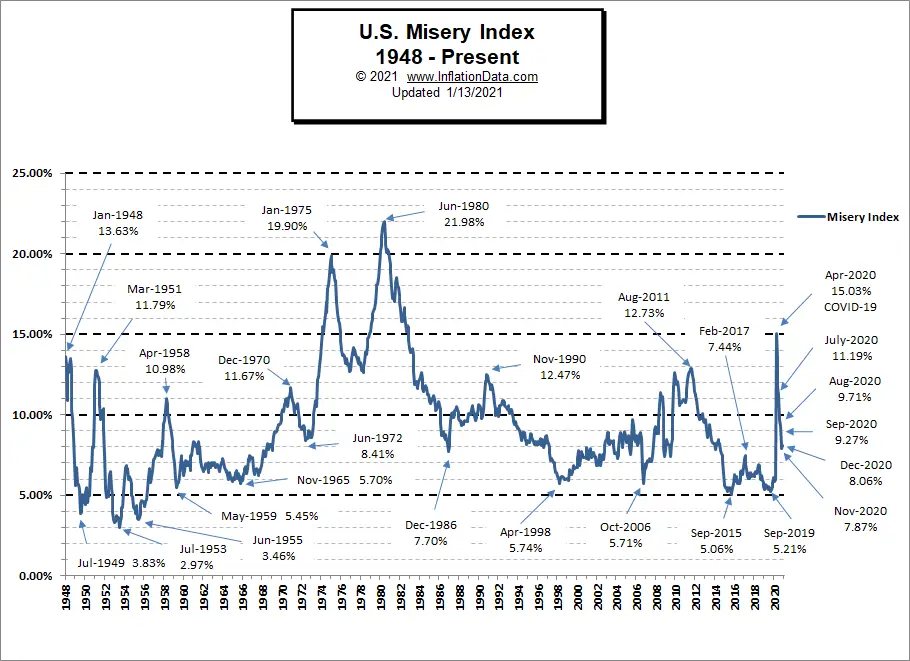 In September 2019, the Misery index was near all-time lows at 5.21%.
In September 2019, the Misery index was near all-time lows at 5.21%.
By March 2020, it had climbed slightly to 5.94%. But in April, due to the COVID-19 shutdown and consequent high unemployment, the Misery Index shot up to 15.03% based on 14.7% unemployment and 0.33% inflation. In May both inflation 0.12% and Unemployment 13.30% fell, resulting in a Misery index of 13.42%. By July unemployment had fallen to 10.2% and inflation had risen slightly to 0.99% resulting in a Misery index of 11.19%. In September, unemployment fell to 7.9% and inflation was virtually unchanged at 1.37%. In October both Unemployment and Inflation decreased. Unemployment fell to 6.9% and inflation was 1.18% resulting in a misery index of 8.08% down from 9.27% in September. In November, unemployment fell a much smaller amount to 6.7% and inflation fell virtually nil to 1.17% so the misery index was 7.87%. The misery index rose slightly in December as unemployment remained unchanged at 6.7% but inflation rose slightly to 1.36%.
[Read More…]
NYSE Rate of Change (ROC)©
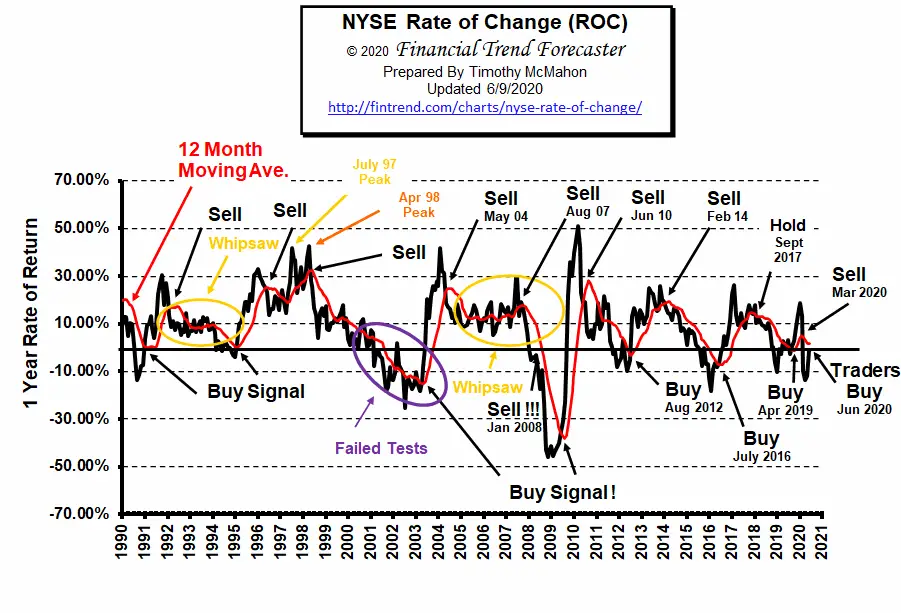
Hold? Signal (Whipsaw)
Not surprisingly with all that has happened, 2020 has been a giant rollercoaster ride (aka. whipsaw) for the NYSE. But there are indicators that the market may be topping.
See the NYSE ROC for more info.
NASDAQ Rate of Change (ROC)©
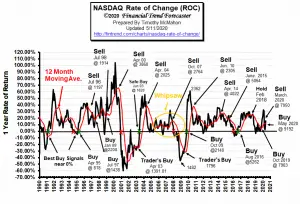
Hold Signal!
The ROC index is ABOVE its moving average. But as we said in the NYSE ROC these are uncertain times and combined with the lofty heights of the NASDAQ caution is warranted. Thus the HOLD Signal.
See NASDAQ ROC for more.
Moore Inflation Predictor (MIP)
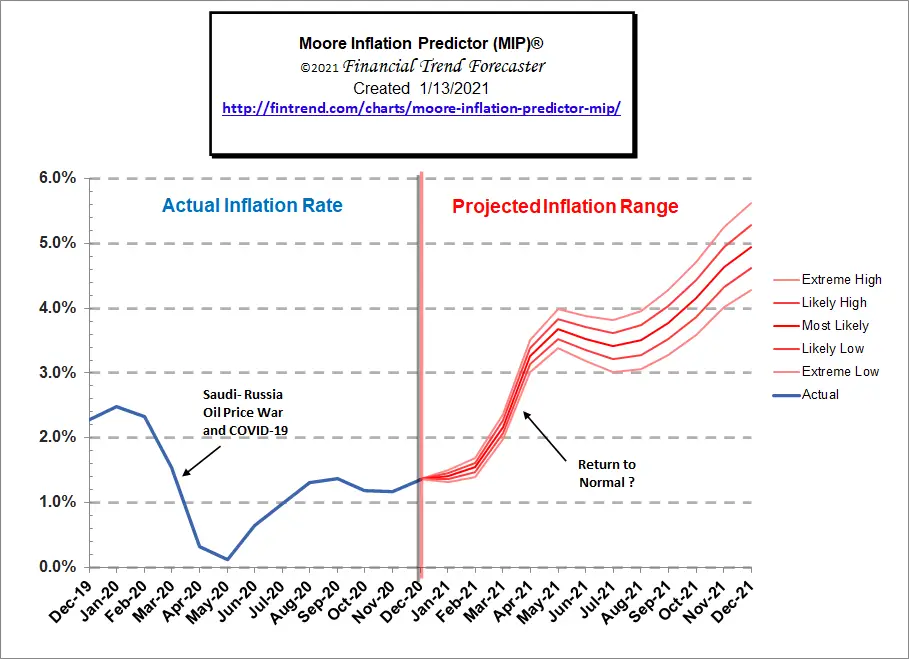 In November, the actual inflation was exactly on the “extreme high” of our December MIP projections. But in December, actual inflation was much higher than typical for this time of year so inflation was above even our highest projections. Current projections are for a massive rebound in inflation as the 2020 COVID deflation falls out of the annual calculations.
In November, the actual inflation was exactly on the “extreme high” of our December MIP projections. But in December, actual inflation was much higher than typical for this time of year so inflation was above even our highest projections. Current projections are for a massive rebound in inflation as the 2020 COVID deflation falls out of the annual calculations.
See: Moore Inflation Predictor for more info
Regional Inflation Information
The U.S. Bureau of Labor Statistics also produces regional data. So if you are interested in more localized inflation information you can find it here.
| AL | AK | AR | AZ | CA | CT | CO | DC | DE | FL | GA | GU | HI | IA |
| ID | IL | IN | KS | KY | LA | MA | MD | ME | MI | MN | MO | MS | MT |
| NC | ND | NE | NH | NJ | NM | NV | NY | OH | OK | OR | PA | PR | RI |
| SC | SC | SD | TX | UT | VA | VI | VT | WI | WA | WI | WV |
You Might Also Like:
From InflationData.com
- Long Term Inflation Charts Updated
- November Inflation Virtually Flat
- Annual Inflation in October is 1.18%
- Emerging Technologies
Read more on UnemploymentData.com.
- Unadjusted Employment Down Slightly in December
- Create a Professional Resume
- How to Get a Job with No Experience
- Turning Unemployment to Success
- Jobs That Are Readily Available If You Need One Quickly
From Financial Trend Forecaster
- Top Financial Trends Shaping Banking
- The Death Of U.S. Shale Has Been Greatly Exaggerated
- China Ramps Up U.S. Crude Oil Imports
- Speed and Affordability: Cost of Internet Access Over Time
- New Technologies in the Oil and Gas Industry
From Elliott Wave University
- Market Participants are Extremely Bullish
- Why Most Investors Miss Major Stock Market Turns
- This High-Confident Trade Set-up Makes for Highly-Confident Traders
- Bond Market: “When Investors Should Worry”
- Does the Stock Market Really “See” the Future?
From OptioMoney.com
- Smart Finance Moves: Questions to Ask Yourself Before You Buy a New Car
- Wealth Transfer: Estate Planning
- 5 Things to Consider When Managing Money in a Relationship
- Should You Buy a Second Home?
- Learning to Trade from Video Tutorials
From Your Family Finances
- Why to Set up a Car Care Fund
- Major Systems to Beware of When Buying a Home
- Large Home Upgrades That Can Save You Money in the Long Run
- 5 Essential Checkups to Run on Your HVAC to Maintain Energy Efficiency
- From Fender Bender to High-Speed Collision

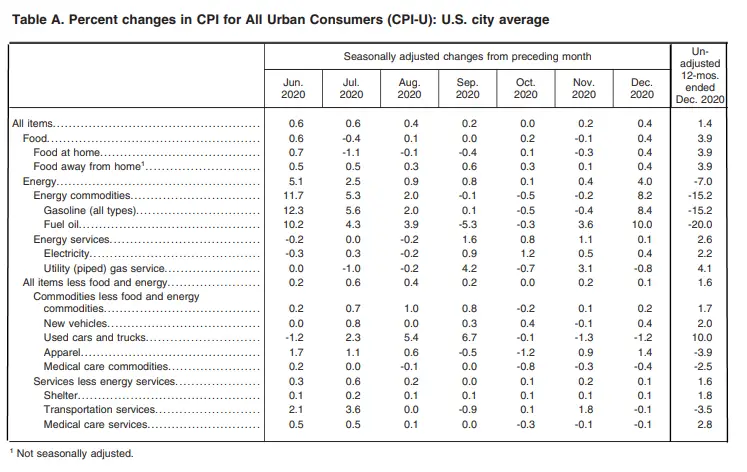
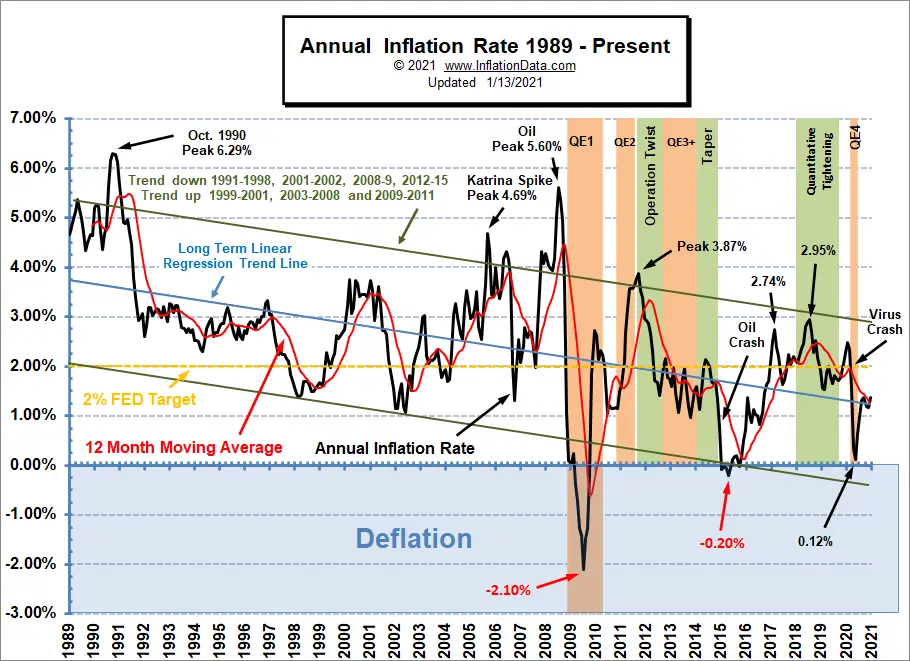
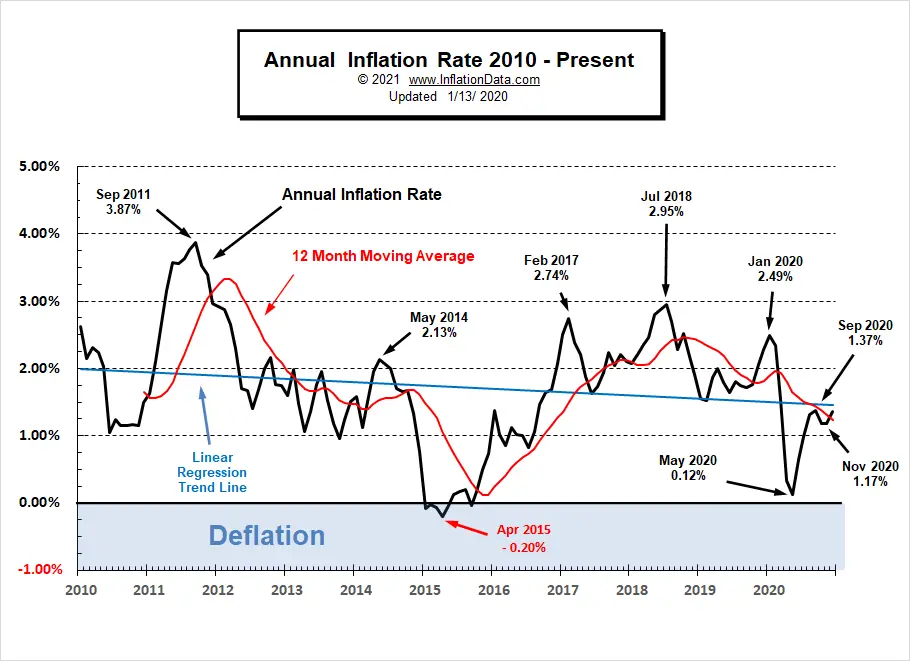
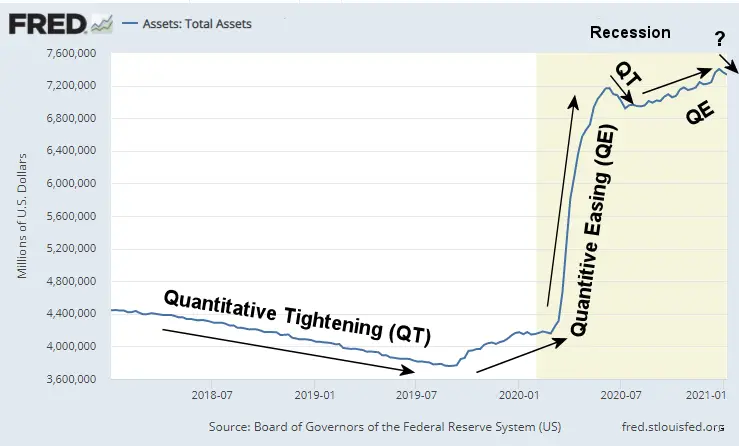
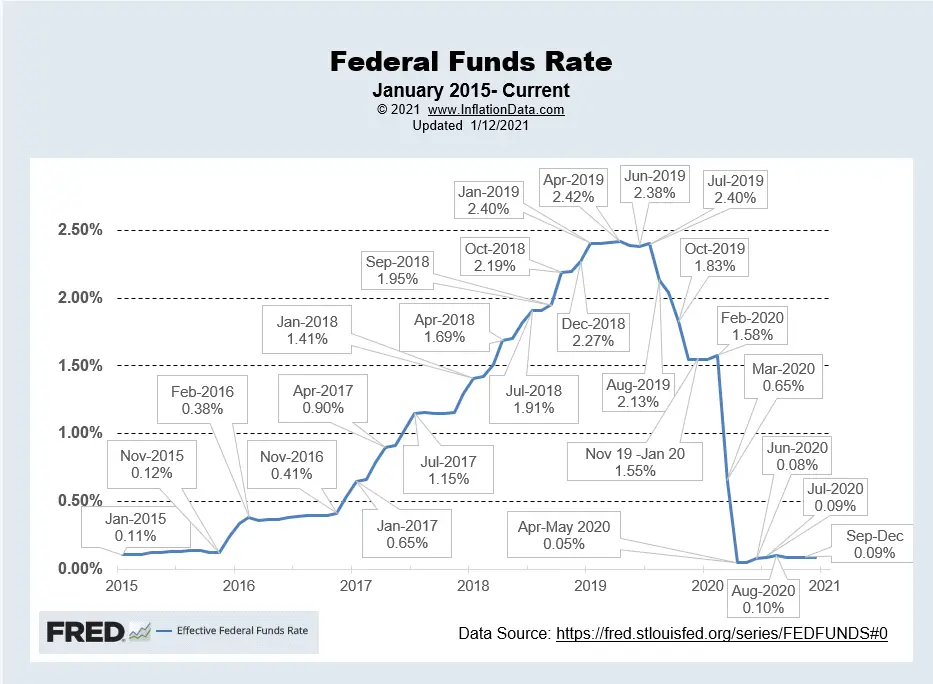

Leave a Reply